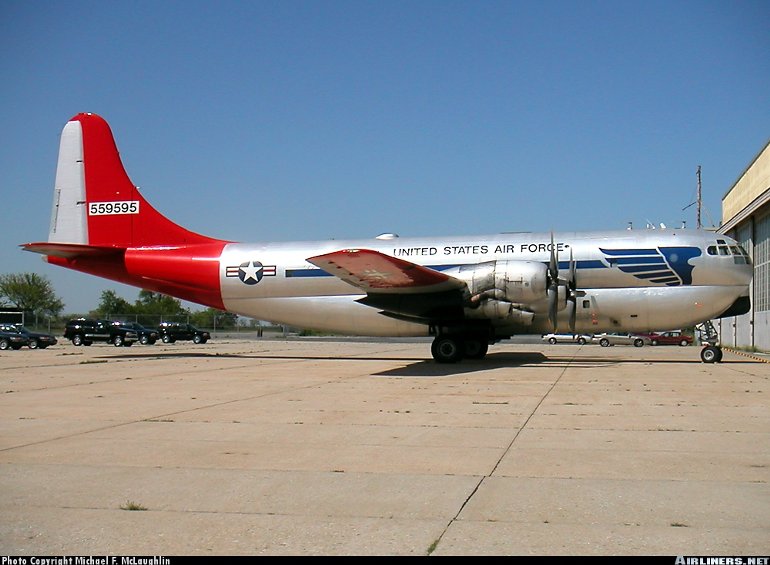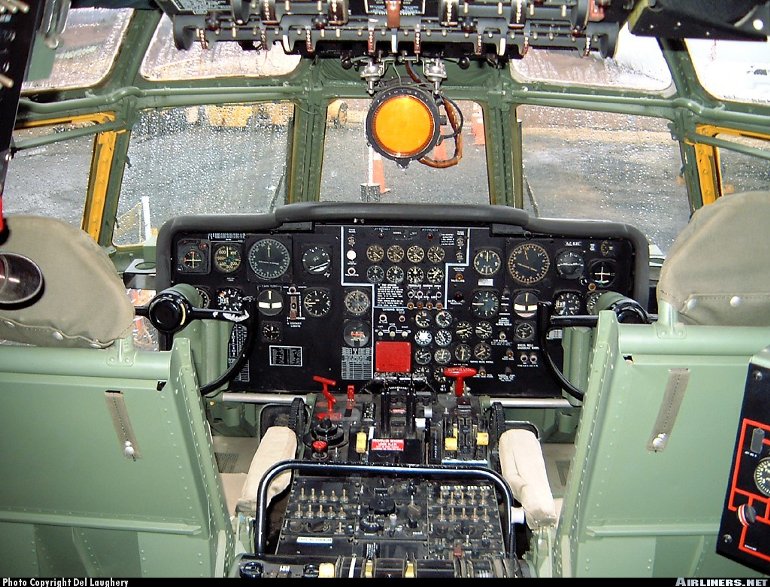Aircraft Technical Data
Boeing C-97 Stratofreighter


| Details | |
| Country of Origin | United States of America |
| Type | Freighter |
| History | Boeing's Stratofreighter formed the backbone of the US Air Force's Military Airlift Transport Service (MATS) during the early 1950s, and more than 800 were built for use as freighters and air-to-air refuellers. The Model 367 Stratofreighter is based on the Boeing B-29 Superfortress, the Allies' most technologically advanced bomber to see service in World War 2, and an aircraft famous (or infamous) for dropping the only atomic bombs used operationally in warfare on Japan in the closing stages of that conflict. The B-29 flew for the first time in September 1942 by which time Boeing had already studied a transport version, utilising the B-29's wing, engines, tail and lower fuselage, combined with a new upper fuselage section. The new double lobe fuselage shape was very distinctive, and also formed the basis for future Boeing jet airliner fuselage cross sections. The US Army Air Force was impressed with Boeing's proposals and ordered three prototypes be built, the first of which flew on November 15 1944. Ten development YC-97s were subsequently ordered, the last of which represented production aircraft, featuring the more powerful R-4360 engines and taller tail developed for the B-50, an improved B-29. The first production C-97A was delivered in October 1949. Development of the C-97 led to the C-97C, which was used for casualty evacuation, and the KC-97E, KC-97F and KC-97G aerial tankers. More than 590 KC-97Gs were built. The KC-97 was the US Air Force's primary tanker until replaced by the jet powered KC-135, the predecessor to the Boeing 707. Small numbers of 377 Stratocruiser airliners were also built, but the last of these have long been retired. Many Stratofreighters survived their military service to be acquired by civilian operators for use as freighters and fire bombers. Only two were still airworthy in 2002, one of them operated by the Berlin Airlift Historical Foundation and the other as a firefighter by Hawkins & Powers. |
| Powerplants | KC-97G - Four 2610kW (3500hp) Pratt & Whitney R-4360-59B Wasp Major 28 cylinder radial piston engines driving four blade constant speed propellers. |
| Performance | KC-97G - Max speed 603km/h (325kt), cruising speed 482km/h (260kt). Service ceiling 35,000ft. Range with max fuel 6920km (3735nm). |
| Weights | KC-97G - Empty 37,450kg (82,500lb), max takeoff 79,450kg (175,000lb). |
| Dimensions | KC-97G - Wing span 43.05m (141ft 3in), length 35.81m (117ft 5in), height 11.67m (38ft 3in). Wing area 164.5m2 (1769sq ft). |
| Capacity | Flightcrew of two pilots, flight engineer, and, in military service, a navigator and radio operator. When configured for passengers can seat more than 100 (Stratocruisers in airline service typically seated 55). |
| Production | Total military Model 367 production of 27 C-97s and 808 KC-97s, in addition to which 55 civil Model 377 Stratocruiser airliners were built. |
| Related Links | Boeing C-97 Stratofreighter |
The backbone of this section is from the The International Directory of Civil Aircraft by Gerard Frawley and used with permission. To get your own copy of the book click here. |
|








